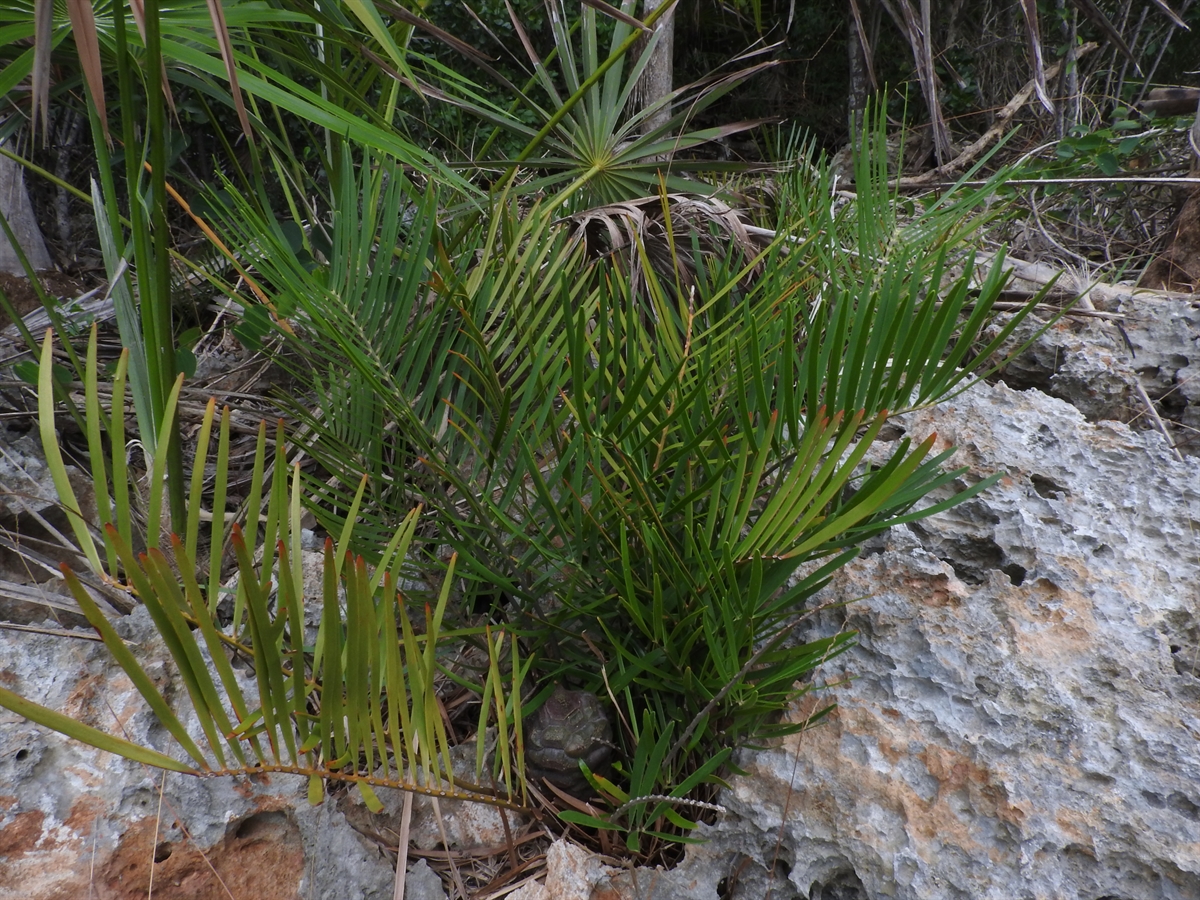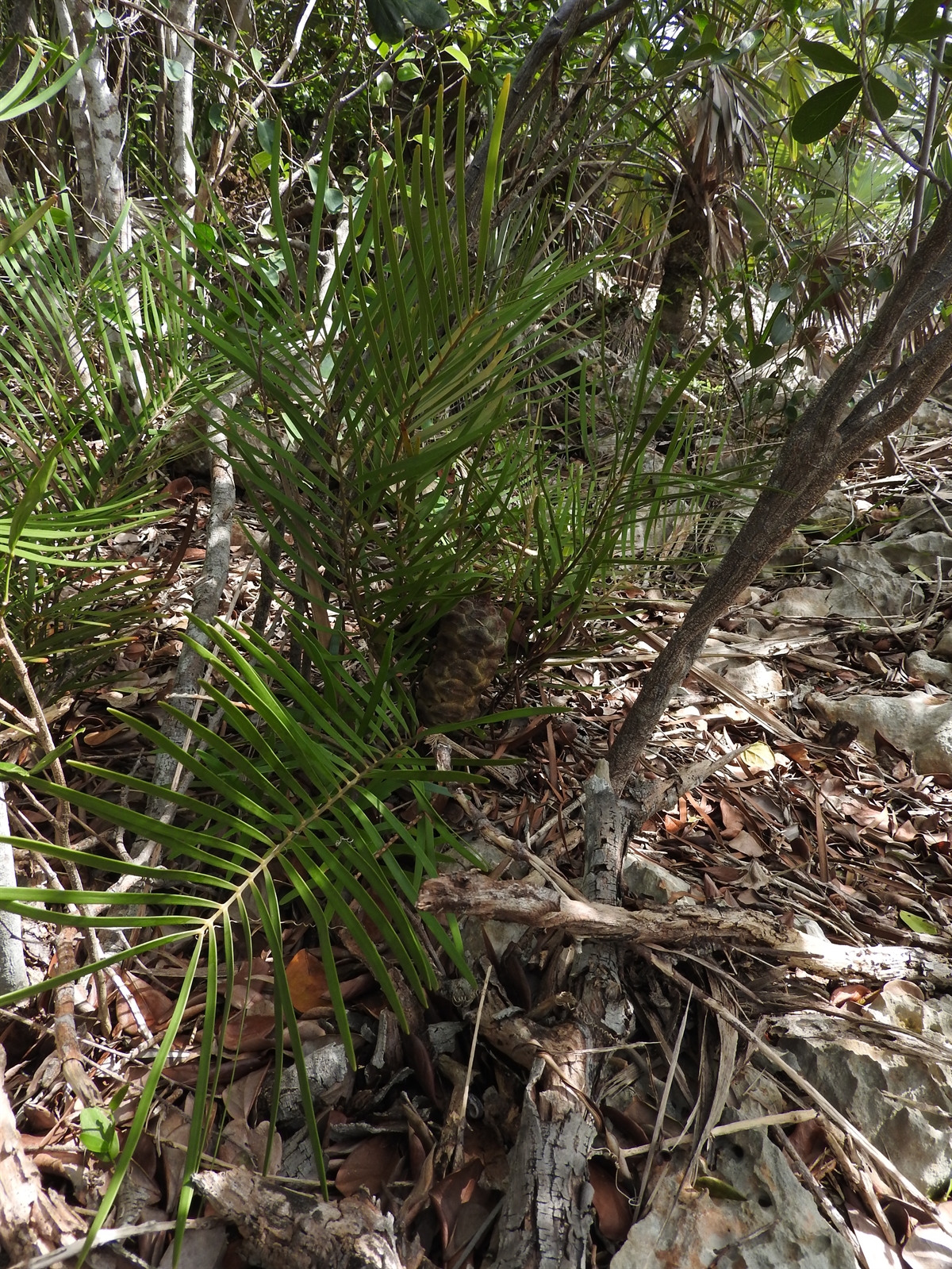Habit: Zamia integrifolia grows from an underground vertical stem 20-50 in length and to 10 cm in diameter. Leaves are produced from the top of the tuber. The leaves are pinnately compound, to 50 centimeters in length and covered with rusty brown hairs when young. The leaflets are narrow, to 20 cm (typically shorter) in length and to 0.5 cm in width, with a slightly toothed apex and an entire margin (occasionally irregular).
Zamia integrifolia is dioecious. The reproductive structures are cones. Microsporangiate cones are solitary or in groups, to 8 cm in length and 2 cm in diameter. There are 15 – 20 series of peltate hexagonal structures underneath which are the microsporagium.
The megasporangiate cones are solitary, to 13 cm in length and 4 cm in diameter. There are 5-8 series of peltate hexagonal structures underneath each ovules are located. The entire structure is covered with reddish hairs.
Habitat: Zamia integrifolia grows coastal Dry Broadleaf Evergreen Formations- Shrublands/Dwarf Shrublands on limestone and in Pine Woodlands.
Distribution: Zamia integrifolia occurs throughout the northern Lucayan Archipelago, Cuba, and Florida. It is listed as Near Threatened by the IUCN and as Appendix II by CITES.
Medicinal/Cultural/Economic usage: Zamia integrifolia is not known to be used medicinally or culturally in the Lucayan Archipelago but is now in the horticultural trade.

